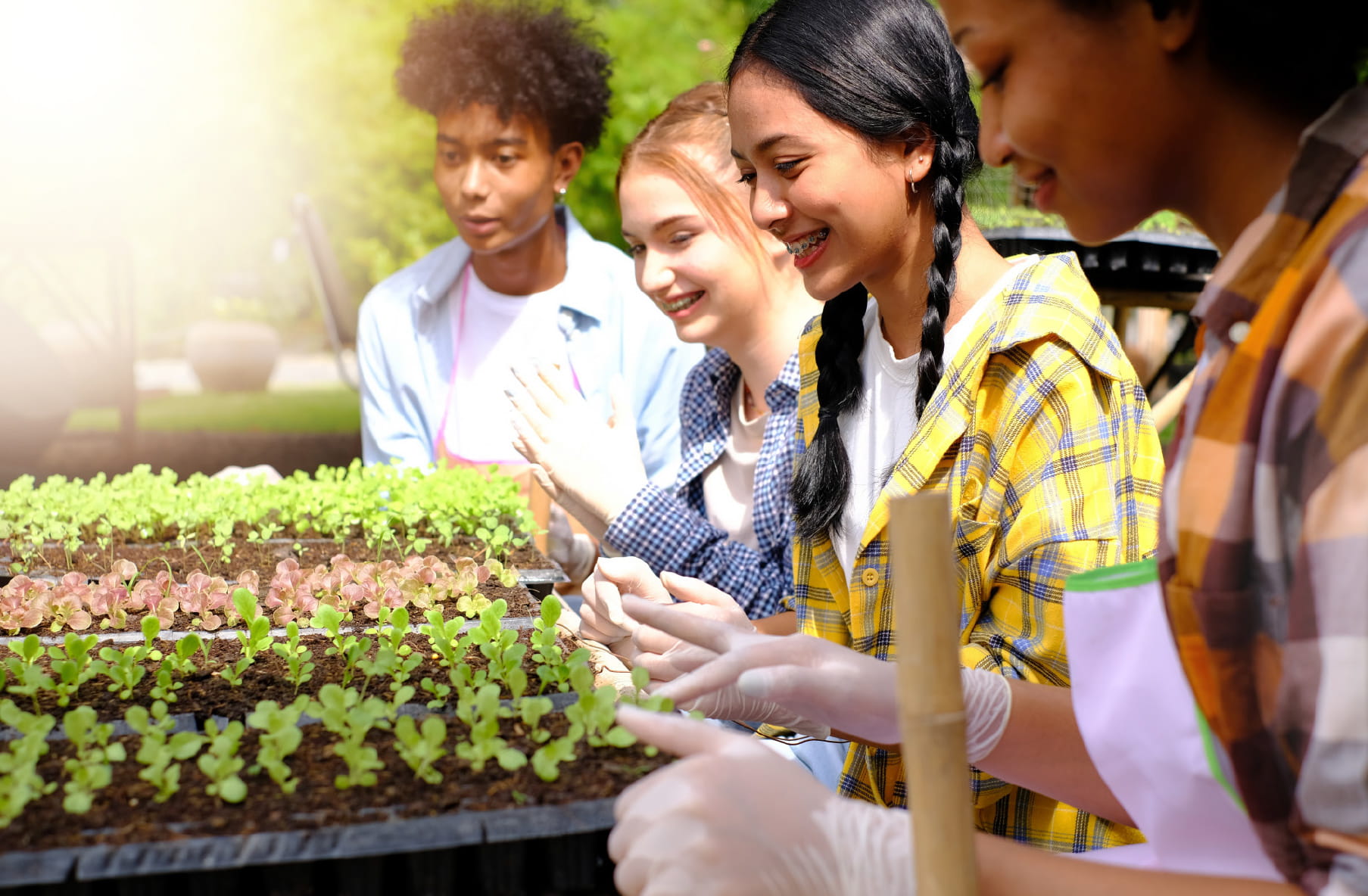As we enter a critical decade for climate action, the need for innovative solutions to global sustainability challenges has never been more urgent. Fortunately, the next generation of changemakers is stepping up, and nowhere is this more evident than in the inspiring projects of the Prize's 2025 Global High Schools finalists. These students from across the world are proving that no matter where you are, meaningful change is within reach.
In this feature, we spotlight three outstanding finalists from the following regions: The Americas and Sub-Saharan Africa, whose sustainability projects aim to create ripples of change in their communities and beyond.
The Americas
Centro de Estudios Tecnológicos del Mar 07 in Mexico plans to champion marine science and sustainability on Mexico’s Pacific Coast. Their aquaponics project combines fish farming with sustainable crop production to address food security while conserving marine resources. This innovative approach not only provides fresh food for the local community but also serves as an educational tool for students to learn about sustainable practices. The project aligns with the school’s mission to create a sustainable future for coastal communities, equipping students with the knowledge and skills to care for their environment. By expanding the project to neighbouring communities, the school aims to impact both health and local economies, showcasing the practical benefits of merging technology with environmental conservation.
Institución Educativa San Nicolás de Tolentino in Colombia hopes to build sources of renewable energy and bolster biodiversity conservation in Colombia. The school's project focuses on building solar-powered classrooms and promoting the preservation of local plant species. By incorporating solar energy into their infrastructure, they reduce dependency on non-renewable energy sources and lower operational costs. At the same time, their biodiversity project educates students on the importance of protecting local flora, helping to restore ecological balance. The school's holistic approach not only improves the learning environment but also empowers students to become advocates for sustainability, ensuring a greener future for their community.
Mulgrave School in Canada intends to set a new standard for environmental innovation with its project focused on using fungi to tackle polyurethane waste. The project involves growing Pestalotiopsis microspora, a type of fungi capable of breaking down plastic waste, in specially designed barrels. The initiative targets the reduction of polyurethane plastics, such as those found in sponges, shoe soles and other products, which typically accumulate in landfills. This plastic is converted into nutrient-rich compost, which will be used in a community garden to address local food insecurity. The project engages over 50 students across all age groups and has the potential to expand beyond the school to community centres and libraries. Mulgrave School is committed to creating a sustainable future, aligning with their mission to foster environmentally responsible global citizens.
Sub-Saharan Africa Finalists
Mpesa Foundation Academy in Kenya plans to transform sustainability in Kenya through an ambitious waste-to-energy project. Their biodigester system converts organic waste into renewable energy, addressing waste management challenges while providing clean energy for the school. This project will serve over 700 students and community members, reducing the academy’s reliance on traditional energy sources and promoting environmental conservation. Through hands-on involvement in the biodigester’s design and operation, students gain valuable skills and knowledge about renewable energy technologies, preparing them for careers in sustainability. The initiative aligns with the school’s mission to provide world-class education while creating a positive impact on both the environment and society.
Sakafia Islamic Senior High School in Ghana wishes to address food insecurity with an innovative aquaponics project. Combining fish farming with plant cultivation, this sustainable system provides a steady supply of food for the school and surrounding communities. The project reduces water use and enhances food production efficiency, making it a sustainable model for agriculture in resource-scarce environments. Students are not only learning modern farming techniques but also gaining the skills to address food security challenges in their communities. The school’s initiative has the potential to improve nutrition, generate income and promote environmental stewardship across the region.
St Kizito High School Namugongo in Uganda hopes to tackle sustainability with an innovative waste-to-resource project. The initiative focuses on converting food waste into useful products, including livestock feed, bio-fertilisers and briquettes for cooking. Using Black Soldier Fly Larvae (BSFL), the project transforms food waste into nutrient-rich livestock feed, offering a cost-effective and environmentally friendly alternative. Additionally, the school addresses water contamination and local health issues caused by improper waste disposal. By involving students and community youth in the process, the initiative creates green jobs and promotes environmental awareness. St. Kizito’s project provides practical solutions to local sustainability challenges, aligning with the school’s mission to equip young people with skills that promote environmental stewardship and economic empowerment. Through their efforts, the school hopes to set an example of how small communities can lead impactful sustainability efforts.
These remarkable schools exemplify the Prize’s mission to empower young people with the tools and resources to lead their communities toward a sustainable future and to spark real, tangible change in the communities. The winners will be announced at the Awards Ceremony on 14 January 2025.
.svg?iar=0&hash=670E3638BC16C0DD69B262DD1184DEA8)

